
The Connemara Public Library at Egmore in Chennai, Tamil Nadu, India, is one of the four National Depository Libraries which receive a copy of all books, newspapers and periodicals published in India. Established in 1896, the library is a repository of century-old publications, wherein lie some of the most respected works and collections in the history of the country. It also serves as a depository library for the United Nations. It is located in the Government Museum Complex on Pantheon Road, Egmore, which also houses the Government Museum and the National Art Gallery.
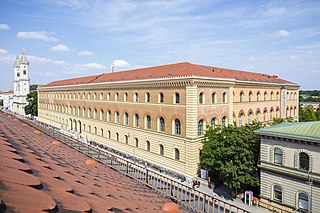
The Bavarian State Library in Munich is the central "Landesbibliothek", i. e. the state library of the Free State of Bavaria, the biggest universal and research library in Germany and one of Europe's most important universal libraries. With its collections currently comprising around 10.89 million books, it ranks among the leading research libraries worldwide. The Bayerische Staatsbibliothek furthermore is Europe's second-largest journals library. Furthermore, its historical holdings encompass one of the most important manuscript collections of the world, the largest collection of incunabula worldwide, as well as numerous further important special collections. Its collection of historical prints before 1850 totals almost one million units.

Comenius University in Bratislava is the largest university in Slovakia, with most of its faculties located in Bratislava. It was founded in 1919, shortly after the creation of Czechoslovakia. It is named after Jan Amos Comenius, a 17th-century Czech teacher and philosopher.

The National Széchényi Library (OSZK) is a library in Budapest, Hungary, located in Buda Castle. It is one of two Hungarian national libraries, the other being University of Debrecen Library.

Dr. Safvet-beg Bašagić, also known as Mirza Safvet, was a Bosnian writer who is often described by Bosniak historians as the "father of Bosnian Renaissance", and one of the most renowned poets of Bosnia and Herzegovina at the turn of the 20th century. Bašagić co-founded the political journal Behar and was a founder of the cultural society and magazine Gajret, and was elected President of the Bosnian council in 1910. He is also well known for his oeuvre that exceeded seven hundred biographies he compiled over decades.
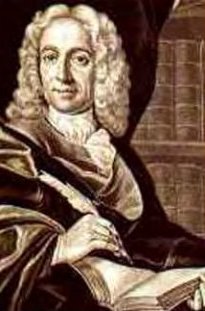
Matthias Bel or Matthias Bél was a Slovak Lutheran pastor and polymath from the north of the Kingdom of Hungary (Slovakia). Bel was active in the fields of pedagogy, philosophy, philology, history, and theoretical theology; he was the founder of Hungarian geographic science and a pioneer of descriptive ethnography and economy. A leading figure in pietism. He is also known as the Great Ornament of Hungary.

The British Library of Political and Economic Science, commonly referred to as "LSE Library", is the main library of the London School of Economics and Political Science (LSE). It is one of the largest libraries in the world devoted to the economic and social sciences. The Library responds to around 6,500 visits from students and staff each day. In addition, it provides a specialist international research collection, serving over 12,000 registered external users each year. It is housed in the Lionel Robbins Building.
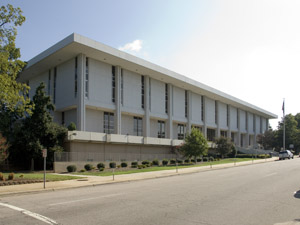
The State Library of North Carolina is an institution which serves North Carolina libraries, state government employees, genealogists, and the citizens of North Carolina. The library is the main depository for North Carolina state publications and serves the needs of North Carolina government agencies and state government employees by providing access to information resources that are vital to public decision-making and economic development.

The Vernadsky National Library of Ukraine, VNLU is the main academic library and main scientific information centre in Ukraine, one of the world's largest national libraries. Its main building is located in the capital of the country — Kyiv, in the Demiivka neighborhood.

The National Library of Armenia is a national public library in Yerevan, Armenia. It was founded in 1832 as part of the state gymnasium-school of Yerevan. It is the official cultural repository for the entire republic.

The Slovenská národná knižnica is a modern scientific, cultural, information and educational institution that serves all citizens of Slovakia and users from abroad. Slovak National Library is conservation and depositary library of Slovakia. SNL preferably collects, professionally processes, stores, protects and makes accessible domestic and foreign Slavic documents. Funds and collections of the Slovak National Library contain 4.9 million library items, 1.7 million archive documents and thousands of museum units.
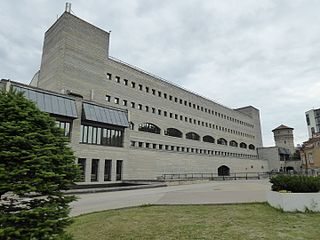
The National Library of Estonia is a national public institution in Estonia, which operates pursuant to the National Library of Estonia Act. It was established as the parliamentary library of Estonia on December 21, 1918.
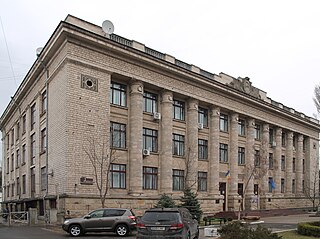
The National Library of Moldova located in Chişinău, Moldova is the main library of the state which is responsible for conservation, valorization and protection of written cultural heritage. The National Library operates according to the guiding principles of UNESCO referring to this type of libraries, it is part of the European Digital Library. Founded in 1940, it traces its roots to the Gubernatorial Public Library of Bessarabia established in 1832. At present, the National Library is one of the objectives with great value of the national patrimony and presents the treasure written and printed cultural heritage of the country. Library ensures wide public access to its collections for research, study and / or information. The Director General is Elena Pintilei.
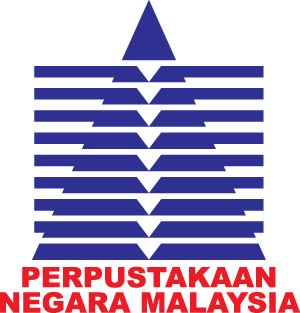
The National Library of Malaysia (PNM) is a library established under the National Library Act 1972 in Kuala Lumpur, Malaysia.
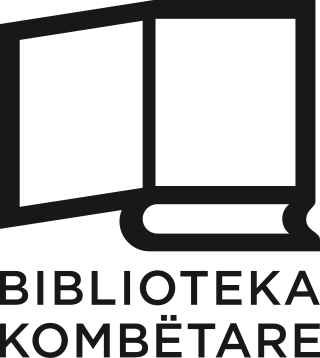
The National Library of Albania is an Albanian national library headquartered in the capital, Tirana. It was founded in 1920 and inaugurated on December 10, 1922.

Bratislava, historically known as Preßburg (Pressburg), is the capital and largest city of Slovakia. Officially, the population of the city is about 475,000; however, it is estimated to be more than 660,000—approximately 140% of the official figures. Bratislava is in southwestern Slovakia at the foot of the Little Carpathians, occupying both banks of the River Danube and the left bank of the River Morava. Bordering Austria and Hungary, it is the only national capital to border two sovereign states.
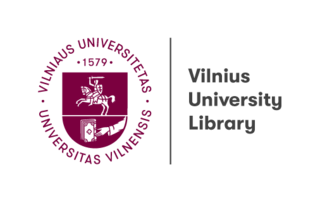
Vilnius University Library or VU Library is the oldest and one of the largest academic libraries of Lithuania. It was founded in 1570 by the Jesuits and as such is nine years older than Vilnius University. VU Library holds 5.4 million documents on shelves measuring 166 kilometres (103 mi) in length. The holdings, accessible to members of the university and wider public, include some of the oldest manuscripts, incunabula and engravings in Lithuania and Eastern Europe. At present the library has 36 thousand users.
The University of North Texas Libraries is an American academic research library system that serves the constituent colleges and schools of University of North Texas in Denton. The phrase "University of North Texas Libraries" encompasses three aspects: The library collections as a whole and its organizational structure; The physical facilities and digital platform that house the collections; and certain self-contained collections of substantial size that warrant the name "Library"—the Music Library and the Digital Libraries (collections), for example, are housed in Willis Library.

The Jessenius Faculty of Medicine or Jessenius School of Medicine is a co-educational medical school in Martin, Slovakia. It is the academic medical teaching and research arm of Comenius University. It is one of the thirteen faculties of the university, and is the only one of the faculties of the university that is not located in Bratislava.

Jozef Gregor, better known as Jozef Gregor-Tajovský, was a Slovak novelist, playwright, poet, teacher, and politician. As a novelist, he is considered to be a leading figure of the second wave of Slovak literary realism and as a playwright, he is the founder of Slovak realistic drama. His plays are still part of the core repertoire of Slovak professional theatres, including the Slovak National Theatre, as well as various other domestic and foreign stages.




















